- Speedometer – must be present, in good condition and must be able to illuminate.
- Steering – Electronic steering lock or power steering lamps must not be indicating a malfunction
- Lights – 'tell-tale' device does not illuminate when option is selected (Main Beam/Direction indicators/Hazard Warning Lamps/Rear Fog Lamps)
- SRS indicator lamp must not be illuminated
- EPB warning lamp must not be illuminated
- ESC warning lamp must not be illuminated
- Brake Fluid warning lamp must not be illuminated
- EBS warning lamp must not be illuminated
- ABS/ESC checked for presence and condition
- TPMS must operate and not show fault in the system
- Engine malfunction indicator lamp should not be illuminated
- VIN number must be complete, permanently displayed, consistent and legible.
- Registration plates must be : Present, secure, clear, clean and visible.
- Registration plate letters and numbers must be of the correct font with correct spacing.
- Front plates must be black writing with white background and rear plates must be black writing with yellow background.
- Honeycomb background is not allowed.
- Pre 1973 Vehicles may have plates displaying white, grey or silver font on a black background.
- Tow-bar components must not be insecure, fractured, damaged, corroded or excessively worn.
- Excessive corrosion within 30cm of the tow-bar mounting will also mean a failure.
- Tow-bar assembly must be attached to the vehicle structure using a mounting, support or fixing which is of an appropriate size or type.
- Retaining device must be present and secure.
- Locking device must be present, secure, adequate and must be operational.
- Play between detachable tow-ball and its receiver socket must not be excessive.
- Quick release mechanism must secure the tow-ball arm as intended.
- Tow-bar assembly must not be inappropriately repaired or modified.
- Trailer electrical sockets must not be insecure, damaged or deteriorated to the point that a connecting lead could not be securely connected.
- Trailer socket must operate trailer lamps as intended
- Wiring must not be showing exposed conductors.
- Steering wheel must be in an acceptable condition
- Steering wheel must be securely attached to the steering shaft
- The steering lock mechanism must be present, operating correctly and engaging properly.
- Power steering warning lamp must not be illuminated.
- Upper bearings of the steering column are tested for excessive wear.
- Steering shaft must not have excessive end float.
- Clamping bolts must all be secure.
- Split pins and locking nuts must all be secure.
- Free play in the steering must be within the limits
- All flexible couplings and universal joints are checked
- Security of the steering rack/box and the mountings.
- Play in steering joints
- Any other swivel joints which form part of the steering system.
- All steering joints will be inspected, while steering is under load.
- Power steering systems are checked with engine running.
- Power steering fluid is checked with engine switched off.
- Steering rack/box is checked that the nuts/bolts are tight and there is no structural cracking or corrosion of the chassis where it is attached.
- Wheels are checked for smoothness of turning and to ensure that they do not touch the vehicle structure or any brake pipes or hoses.
- Wheel bearings are checked.
- Steering rack gaiters and constant velocity joint boots are examined.
- Ball joint dust covers are inspected to ensure they are not allowing dirt to ingress.
- Bushes, split pins, locking nuts, along with any other locking/retaining devices are checked which relate to steering components.
- Rear wheel steering is checked if present.
- Any repairs or modification to steering linkage or power steering must be appropriate.
- Steering stop lock must be present on cars which have it fitted as standard.
- Steering box must not be showing signs of a significant oil leak.
- Power steering fluid must be above the minimum level.
- Power steering pipes and hoses must not be damaged, corroded or fouling.
- Power steering components must not be fouling or misaligned if they are on an external power steering system.
- Drive shafts (excluding prop shaft) support must not be worn excessively and coupling gaiter must be present and preventing the ingress of dirt.
- Horn must operate
- Control can be reached easily by the driver.
- Horn must be loud enough
- Horn must be a non-sequential tone
- Horn must be continuous.
- Presence
- Condition
- Operation
- Security
Required Lights:
- Headlamps (also checked for alignment)
- Sidelights (known as position lamps)
- Side marker lamps and end outline marker lamps
- Stop lamps
- Daytime running lamps
- Direction indicators and hazard warning lamps
- Front fog lamps
- Rear fog lamps
- Reversing lamps
- Rear registration plate lamps
- Rear reflectors
- Bonnet must be able to be safely secured in the closed position.
- Bonnet retaining device must be effective, secure and in good condition.
- Both front doors must be able to be opened from inside and out and must latch securely.
- Passenger door must be able to be opened from the outside, using relevant control.
- All door hinges, catches and pillars will be assessed for the ease of which the door opens and closes, and the security of which the door stays closed.
- All tail-gates/boot-lids must be able to be secure in the closed position.
Inspections: The following additional inspections will be required regarding the condition of your vehicle’s structure, its body, and whether or not anything is likely to become detached (insecure), and so cause a hazard to other drivers.
The following inspections still apply, including body condition (corrosion) and components such as spoilers, bumpers and mirror housings.
There must be no dangerous sharp edges or projections caused by rust, corrosion or damage which is dangerous to other road users including pedestrians.
Vehicle structure: The vehicle structure must be intact with regard to:
A ‘main load-bearing structural member’ which will fail if it is:
Fractured or deformed such that structural rigidity is significantly reduced
Fractured or deformed such that steering or braking is likely to be adversely affected
Strengthening plates and fastenings will fail if they are:
Insecure
Fractured or deformed and likely to affect braking and steering
Structural corrosion can also cause a failure if:
The rigidity of the assembly is significantly reduced
The vehicle’s steering and braking is adversely affected
General corrosion A vehicle can also fail with respect to corrosion (or rust) for:
- Excessive corrosion in a ‘prescribed area’ — within 30 cm of certain safety related components, e.g. brakes, steering, suspension, seat belt mountings etc.
- Excessive corrosion not in a ‘prescribed area’, but which is likely to adversely affect the vehicle’s braking or steering.
- ‘Excessive corrosion’ can mean a hole or a significantly weakened structure.
Engine mountings This inspection also includes gearbox mountings that provide essential support for the engine. Body corrosion close to an engine mounting will only be rejected if it’s so severe that it results in excessive movement.
Engine mountings are checked for:
- Presence
- Security
- Condition
- Body and interior
- Body condition
This inspection is for all vehicles and includes:
- all body panels
- under-trays
- spoilers
- mirror housings
- Body panels/components must not be damaged or corroded and likely to cause injury when touched
- Body panels/components must be secure & not likely to become detached.
- Should there be any modifications to the body, they must be safe. An unsafe modification is one that is likely to cause injury.
- Body modifications must not be likely to adversely affect braking or steering
- Passenger compartment must not allow entry of exhaust fumes.
Bumpers Bumper must be secure & unlikely to cause injury if touched.
Floor The Tester will inspect the floor in the driver, passenger and goods carrying compartments. A floor must not be excessively deteriorated or insecure. A floor must not be likely to cause loss of control of vehicle, injury or instability,
Spare Wheel Carrier. Spare wheel carrier (if fitted) must be secure. The spare wheel must be secured in the carrier & unlikely to become detached.
- Structure not defective & seat is secure.
- Fore & Aft adjustment mechanism works as intended.
- Back rest can remain in the upright position.
- Does not move without intention.
All other seats:
- Structure must not be defective & seat is secure.
- Back rest can remain in the upright position.
- Folded seats must be able to be lifted to check seat belts.
- All Seat Belts fitted will be inspected.
- Permanently attached child seats will be inspected.
- Seat belt anchorages including seat belt mounting points will be assessed for corrosion. strength, security & consistency. This includes anchorages for securing a disabled persons' belt or wheelchairs.
Seat belt buckles are tested by:
- Fastening the mechanism
- Trying to pull the locked sections apart
- Pressing the release button while pulling the belt, it must release when required.
- Retracting seat belts are checked that the excess webbing is wound into the retracting unit with the mechanism fastened and the seat in its rearmost position.
- All seat belt load limiters fitted will be inspected.
- All seat belt pre-tensioners fitted will be inspected.
Airbags:
- If fitted as standard OE, must be fitted
- Must be operational, with no warning lights present
Mechanical components Unsurprisingly as a major vehicle safety system, the MOT inspection of vehicles’ brakes is extensive and complex. Whilst we have looked into this in some detail here, the key point is that all mechanical braking components that a tester can see, from under the bonnet, from inside the vehicle, or from beneath the vehicle, will need to be inspected for wear and condition.
Inside the car Anti-lock braking system (if fitted) warning lamp is checked for:
- Function
- Sequence of operation
- Footbrake
A fail applies if:
- There’s insufficient reserve travel on the footbrake (i.e. it touches the floor)
- The brake pedal rubber is excessively worn*
- Incorrect operation of the servo assistance system
- Unacceptable wear on the brake pedal pivot
- Service brake pedal or hand lever condition and travel
- A brake pedal rubber is an anti-slip material and it is therefore not regarded as a defect if it’s worn smooth.
- A brake pedal without a rubber usually has grooves or raised sections to provide grip in wet conditions and should be rejected if it’s worn smooth. However, some vehicles may have been manufactured with a brake pedal which did not incorporate grooves or the fitting of an anti-slip material and these will not be rejected.
- A brake pedal will fail if its grooves or raised grip sections are worn smooth. However, it will not be a fail if the vehicle has been manufactured with one that doesn’t have grooves or anti-slip material.
- Often a vehicle is fitted with an after-market brake pedal rubber. It isn’t a defect if the design pattern of the brake pedal rubber is worn smooth.
- A vehicle should only be failed for insufficient reserve if the pedal or lever is touching the floor/handlebar. Checks on vehicles with power-assisted braking systems should be carried out with the engine off.
- Brakes must be releasing & functioning correctly
Parking brake (‘handbrake’) This could be hand, foot or electronically operated. Checked for reserve travel so that it doesn’t reach the stops on application. The parking brake lever’s mountings will be checked for security and/or corrosion. On electronic systems a parking brake warning light illuminated is a failure.
- A parking brake lever must have obvious excessive travel before being rejected.
- The parking brake ratchet must be holding correctly
- Parking brake must be present and not defective or inoperative.
Under bonnet checks The MOT inspection requires the following checks of systems accessible within the vehicle’s engine compartment for the majority of vehicles:
Master cylinder and servo unit are checked for leaks with the engine on and the brakes applied
Master cylinder will be checked for operation.
Master cylinder must be secure.
Brake servo unit will be checked to ensure it is operating correctly*
Visible metal or flexible brake pipes will be checked for corrosion, condition, fouling or leaks
*Note: This can be checked by depressing the brake pedal with the engine running and switching off the ignition – a slight increase in the of pressure on the pedal indicates the servo is working.
Brake servo units and master cylinder (hydraulic systems)
Hydraulic brake fluid level checks are confined to transparent reservoirs or where an indicator is fitted.
Brake fluid must not be below the minimum level
Reservoir caps shouldn’t be missing
A vehicle will be failed if it can be clearly seen that the brake fluid is contaminated.
A brake fluid warning lamp may be shared with other components, for example to indicate that brake pads are worn or the parking brake is applied. Class 3 vehicles aren’t inspected for brake fluid warning lamp. Warning lamp must not be illuminated or defective.
Under vehicle checks
Flexible brake pipes and any other metal brake pipes visible beneath the car are checked
Discs and drums (external only) checked for condition and contamination
Brake back plates and caliper securing devices are checked for condition and security
Condition of the brake pads will be checked if visible
The assistant operates the handbrake and the condition of the linkages and/or cables is checked.
On some vehicles there will be a brake compensating valve beneath the car which will need to be inspected for fluid leaks
Rigid brake pipes
Chafing, corrosion or damage to a rigid brake pipe so that its wall thickness is reduced by 1/3 (approximately 0.25 mm for typical hydraulic brake pipe) will fail. As it is sometimes difficult to assess this accurately, if not sure, the Tester will give the benefit of the doubt.
Brake pipes must not be likely to fail or fracture.
Brake pipes must not be damaged or excessively corroded
Brake pipes must not be leaking.
Brake pipes must be attached correctly and not likely to become detached or damaged
Flexible brake hoses
A hose which is damaged, chafed, twisted or stretched will be rejected.
Brake hose must not be damaged and likely to fail.
Brakes, hoses and connections must not be leaking.
Brake hoses must not bulge under pressure.
Brake hoses must not be porous.
Brake hose ferrules must not be excessively corroded or likely to fail.
Brake linings and pads
Some vehicles have a warning light on the dashboard to indicate that the brake pads are becoming excessively worn. Sometimes this lamp is shared with other components, such as to show that the handbrake is applied. If the warning light is lit, the Tester will fail it, unless it can be seen that there is another reason for it being lit.
Brake pads must not be worn below 1.5mm thickness.
Brake lining and pads must not be contaminated with lubricants.
Brake lining and pads must be present and correctly mounted
Brake discs and drums
A brake disc or drum will only fail if it is significantly worn, insecure, fractures or likely to fail. Being worn below the manufacturer’s recommended limits isn’t a reason in itself.
Brake discs or drums must not be contaminated.
Brake discs or drums must not be missing.
Brake drum back plate must be secure.
Brake performance check
The performance of the front and rear brakes and parking/emergency brake are checked for efficiency and balance using specialised ‘rolling road’ brake testing equipment.
Note: The brakes are checked both for efficiency of performance and their balance for equal braking side-to-side. For some vehicles the ‘rolling road’ brake test equipment cannot be used for technical reasons. In which case the Tester will drive the vehicle on the road using equipment to measure how effective the brakes are and whether they pull to one side of the other in operation.
Braking effort must be adequate and recording at the wheel.
Brake performance must be able to be tested.
Brakes must not be grabbing any wheels severely.
There must be no abnormal lag in brake operation on any wheels.
There must be no excessive fluctuation in brake effort through each wheel revolution.
There must be no significant brake effort recorded without the brakes being applied (indicating binding brakes).
There must not be brake imbalances across an axle so that the braking effort from one wheel is less than 70% of the maximum effort of the other wheel on the same axle.
The braking effort from any wheel must not be less than 50% of the maximum effort recorded from a wheel on the steered axle.
Brake Efficiency
Calculating brake efficiency – roller brake tester
For most vehicles the MOT computer will calculate brake efficiencies automatically.
If the MOT computer isn’t working, the Tester will add the brake efforts from each wheel for the system that is being tested and carry out a calculation to determine brake efficiency.
Brake efficiency must be above the minimum requirement.
Anti-lock braking system (ABS)
Any ABS systems fitted will be checked.
If the ABS has been intentionally rendered inoperative, the whole system must be removed. This doesn’t apply to sensor rings or other ABS components which are an integral part of another component, such as a brake disc or drive shaft.
Device must be working & not showing any malfunction.
Wheel speed sensors must be present & not damaged
Wiring must not be damaged
Other components must be present & not damaged
It’s not permissible to remove or disable the ABS from a vehicle first used on or after 1 January 2010.
Electronic braking system (EBS)
The warning lamp operation on vehicles with an electronically controlled air braking system will be checked.
Device must be working & not show a system malfunction
- The MOT windscreen Test includes all items affecting the driver’s view of the road: the condition of the windscreen, the wipers and washers.
- Satnavs in the windscreen, furry dice, air fresheners or trinkets hanging from the mirror are not allowed. (The Tester may remove them)
- The condition of the windscreen and the windows on either side of the driver’s seat will be checked.
- The Tester will sit in the driver’s seat, check the view of the road and check the view of mandatory external mirrors for:
- Damage in windscreen zone ‘A’ more than 10mm in diameter
- Damage in the remainder of the windscreen’s swept area more than 40mm in diameter
- Damage to windows on either side of the driver’s seat
- Excessive tinting or discolouration of the windscreen or windows on either side of the driver’s seat
Wipers are checked for:
- Operation
- Extent of area swept by wipers
- Condition of wiper blades
- Windscreen washers must be working & provide sufficient fluid to clear the windscreen
- Mirrors which are checked during an MOT test must be secure and visible from the drivers seat.
- Mirrors must not be distorted or damaged so the the driver has a clear view of the road.
Some suspension systems will be more complex than others and many of the checks cannot be done without elevating the vehicle on a specialised vehicle lift so the Tester can inspect the appropriate parts of the vehicle’s suspension from underneath.
All the mechanical joints, levers, springs and other items associated with the suspension system will be inspected (for breaks, cracks, excessive corrosion and so on), together with the condition of the vehicle’s structure to which the suspension system is attached.
Axles
Axles must not be fractured, insecure or with loose fixing bolts. The axles must not be insecure so that stability is impaired or functionality is affected.
Axles must not have any unsafe modifications. Any modifications must not affect the vehicle stability or axle functionality.
Suspension
Under bonnet checks:
Upper suspension joints.
Any other suspension components which can be inspected from beneath the bonnet.
Under vehicle checks:
This applies to both the front and the rear suspension.
No split pins or nuts are missing, no components are broken or excessively damaged.
Coil springs are checked for condition.
All suspension joints are checked for condition.
Shock absorbers must not leak and must be secure.
Coil Springs
Coil springs must be securely attached to the chassis or axle, with no loose fixings allowing visible movement.
Coil springs must not be fractured or seriously weakened. The main leaf must not be fractured.
Coil springs must be present and the directional control must not be affected.
Coil springs must have no unsafe modifications and any modifications must not affect the operation.
Shock absorbers
Shock absorbers must be present & securely attached to the chassis or axle.
Shock absorbers must not be damaged, or showing signs of major leaks.
Shock absorbers must be functional and not excessively worn.
Suspension arms, rods, struts, sub-frames, anti-roll bars etc.
All suspension components must be securely attached to the chassis or axle.
All suspension components must be present, with no impairment of directional stability.
All suspension components must not be excessively damaged or corroded.
All suspension components must not be fractured or likely to fail.
All suspension components must have no unsafe modifications and any modifications must not affect the operation or cause other components to fail.
Suspension joints, pins and bushes
Some rubber/synthetic bushes in suspension joints are designed to allow some movement.
MacPherson strut top bushes are designed to have significant lateral play when the suspension is hanging free. The Tester will only reject MacPherson strut top bushes when play is due to wear or maladjustment.
The Tester will assess wear or play in spring pins and bushes using various methods.
The suspension pins, bushes or joints must not be excessively worn or likely to become detached.
Suspension joint dust covers must not be severely deteriorated, missing or allowing the ingress of dirt.
Gas, air and fluid suspension
Suspension system must be operational.
System must not be deteriorated, damaged or modified so that the functioning of the system is adversely or seriously affected.
There must be no obvious leaks from any part of the system.
Complete suspension system
The strength and continuity of the vehicle’s load bearing members and their supporting structure or panelling around any spring, sub-frame or suspension component mounting will be checked.
The strength and continuity must not be significantly reduced or inadequately repaired and must not be weakened so that control of the vehicle is likely to be adversely affected.
- Exhaust system must be present and in good condition.
- Catalytic Converter must be present if fitted as standard.
- Mounting must be present and in good condition so that exhaust system is secure.
- Exhaust system must have no leaks.
- Exhaust system must be of a reasonable noise level.
- Exhaust tailpipes must be positioned so that fumes are not likely to enter the driver or passenger areas.
- Emissions are tested with specialised equipment which measures the amount of pollution coming out of the exhaust, if it is too high the vehicle will fail.
- Excessive smoke will mean a failure.
- Fuel Cap must fasten securely.
- Fuel cap seal must be present and in good condition.
- Fuel tank must be securely mounted.
- Fuel hoses and pipes must not be excessively worn or damaged.
- Fuel system must have no leaks.
- Tyres must have at least 1.6mm tread depth over the central three quarters of the width of the tyre, over the entire circumference of the tyre.
- Tyres must be correctly matched with regard to type, size and structure.
- Tyres must be fitted in accordance with side-wall markings.
- Tyres on the same axle must be of same structure and size.
- Tyres and tyre valves must be in good general condition, with no dangerous cuts or bulges.
- Wheels must not be damaged, distorted, cracked and must be securely attached to the vehicle.
- Wheel nuts/studs must all be present
- Spare wheels and spare wheel carriers must be securely attached so that they don't fall off.
If your vehicle has failed the test, you’ll be given a failure document with reference to this manual. You can watch the test from a designated viewing area but you are not allowed to interrupt the tester while working.
All MOT testers have been on a training course with the Vehicle and Operator Services Agency (VOSA) and their test results are checked regularly.
Customer Reviews
Highly recommend Arnolds garage . Very friendly, honest and approachable. Nothing is too much trouble and will always try to accommodate if you need t... Read More
Emma Darke
A reliable, professional and friendly service 👍 I felt my car was in expert hands. Certainly will be using this garage again. A big 5⭐️ recomme... Read More
Deborah L Tyrrell
My car was brought into Arnold's by my Dad last october for an MOT so much was found to be wrong. Unfortunately one thing after another was wrong and... Read More
Hannah Lucking
Great Service. Highly recommend using this garage for car sales and servicing.... Read More
Simon Wallis
Very impressed with the customer services. Always happy to support with different issues. Expertise in car maintenance.... Read More
Graham Goodwin
They are so good I continue to drive from my new home 25 miles away to have my car serviced and MOT'd. Quick, efficient, helpful, and really friendly.... Read More
Kevan Pegley
5* ++++ Rating Ive never come accross a garage of more helpful proprietors in my long life. Bought a cheap Astra auto estate run around third car for... Read More
Jordan
Very happy with the services and staff at Arnold's garage. They are always so polite and happy to help their customers... Read More
Kimberley Kelly
Lovely service and they always get the job done super quick - they were very accommodating when I didn’t have a lift to pick up my car and drove ove... Read More
Natasha Sofia
Arnolds searched for a car to our specifications...serviced and checked it...provided courtesy car. So pleased with service they provided. Friendly, h... Read More
Pauline Palmer
Our old Hyundai has done over 200,000 miles and had gradually developed a terrible noise when driving over 20 mph. Took it into Arnolds first thing in... Read More
David Hudson
The staff at Arnold Garage are always friendly and ready to help and the shop is clean and tidy with lots of stock love the bread 😀... Read More
Christine Cox
Arnold’s Garage helped me out today with a problem with my car. They were so friendly and extremely helpful from the very first moment I called them... Read More
Esther W
Very Experienced and knowledgeable team, Specialist services available for Modern and Classic Vehicles..... Read More
Andy Gilday
Got my first car from here a week ago, less than a week later I picked it up after it having all work completed to a high standard. So when I picked i... Read More
Hannah Cox
Delighted to discover that in addition to excellent Garage services, Arnold's now has a Post Office! Open the same hours as the garage. Brilliant! Let... Read More
Catherine Ridgeon
I had my car serviced at Arnolds on Monday - I cannot praise them enough, & highly recommend them. They detected a big problem with my car that I'm su... Read More
Joanne Claire
Arnold's Garage Haslemere, are just extremely brilliant and out of this world, they have the best top notch first class customer service and seem to a... Read More
Stanley Kunyeda
Thanks to Peter and the crew for repairing my car so quickly at such short notice this morning - needing new brake pads and 4 new tyres. Great friendl... Read More
Sarah Foster
Arnold's is a fantastic family run garage who provide an excellent personal service. The personal service even extends to the team opening the garage... Read More
Anonymous
Contact Details
Shottermill PondsCamelsdale Road
Haslemere
Surrey
GU27 3RB 01428 652121 info@arnoldsgarage.co.uk

 01428 652121
01428 652121
 Used BMW
Used BMW Used CHEVROLET
Used CHEVROLET Used DS AUTOMOBILES
Used DS AUTOMOBILES Used FORD
Used FORD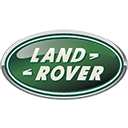 Used LAND ROVER
Used LAND ROVER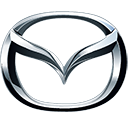 Used MAZDA
Used MAZDA Used MERCEDES-BENZ
Used MERCEDES-BENZ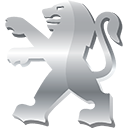 Used PEUGEOT
Used PEUGEOT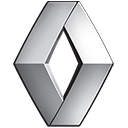 Used RENAULT
Used RENAULT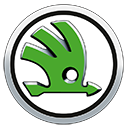 Used SKODA
Used SKODA Used TOYOTA
Used TOYOTA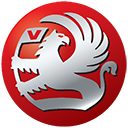 Used VAUXHALL
Used VAUXHALL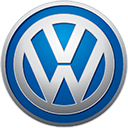 Used VOLKSWAGEN
Used VOLKSWAGEN